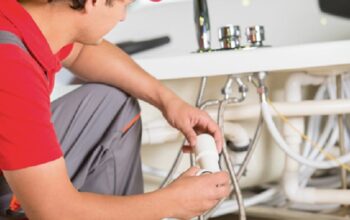Getting orthodontic treatment for your child can be an exhilarating experience. But before you can even get started, you need to find an orthodontist. There are a few essential things that you need to know about kids’ orthodontists, including what they do, the types of treatments they offer, and how to select the right one for you.
Early intervention orthodontics
Getting an early orthodontic evaluation is essential for any child. It helps to identify potential problems that can prevent them from developing. Also, it helps to reduce the overall time required to treat the pain.
Orthodontic issues can be caused by an early loss of baby teeth, injury to the mouth, genetics, or other factors. When these problems are left untreated, they can lead to tooth decay, gum disease, and other health concerns.
A properly aligned bite allows permanent teeth to grow straight. It can also help prevent the development of jaw disorders such as TMJ. Proper jaw growth can also help your child speak properly.
Many orthodontists recommend an initial assessment at age eight or even before. This will give your kids orthodontist a better idea of what needs to be done to help your child smile.
An orthodontist can help detect potential problems, such as a protruding jaw, and give you a better idea of what treatment will be needed. They can also help you avoid future surgery, such as a root canal.
Phase 1
During this phase, the orthodontist will monitor the growth of the face and teeth. They may recommend jaw adjustment to improve the upper and lower jaw relationship. The goal is to ensure that there is enough room for permanent teeth.
The treatment phase involves using removable oral appliances that gently shift the teeth to create room for future adult teeth. These devices are also helpful in treating jaw issues like crossbites.
This phase of treatment aims to correct overcrowding, crookedness, and gaps. The goal is to create a functional and aesthetically pleasing smile. It also allows the kids orthodontist to prevent future problems.
The phase of treatment is usually about nine months to 18 months. In some cases, the braces may be placed for more extended periods. This makes the second phase of treatment more effective. The phase of therapy aims to correct the most common orthodontic problems.
TMJ splint therapy
Using TMJ splint therapy for kids can provide relief and a temporary fix for pain associated with TMJ. However, it also prepares the child for orthodontic treatment. In addition, TMJ is caused by misalignment of the teeth and jaw, so it is essential to visit a dentist regularly to avoid serious issues.
There are several treatments for TMJ, including medicine, injections, and surgery. However, most kids do not need surgery.
A dentist can prescribe medicine to relax the muscles that cause the pain, and splints can help alleviate symptoms. These are effective in preventing the jaw from grinding and clenching. Splints also help prevent unconscious habits that may cause jaw pain.
In addition, splints help prevent the TMJ from becoming damaged. A misaligned jaw can cause inflammation of the joints, leading to chronic headaches and tooth damage.
A splint is custom-made, molded from an impression of the teeth, and worn for a specified amount of time. In addition, the sling needs to be monitored to ensure equal contact on all teeth.
Two-phase treatment
Having your child undergo two-phase treatment with a kids orthodontist is a great way to give your child a head start in dental care. This treatment offers a range of benefits, including straightening your child’s teeth, relieving symptoms of dental abnormalities, and improving the cosmetic appearance of your child’s smile. But it’s important to note that it’s not for everyone.
During the first phase, an orthodontist will check your child’s teeth and jaw for alignment issues. These issues can be underbites, crossbites, overbites, or crowded teeth. If these issues are found, the orthodontist will likely recommend treatment. This may include a growth modification appliance, which may be able to correct an overbite.
In the second phase, braces are placed on the child’s upper and lower teeth. Braces are designed to shift teeth into position gradually. They will help your child develop good oral health, improve self-esteem, and reduce the risk of broken teeth.





